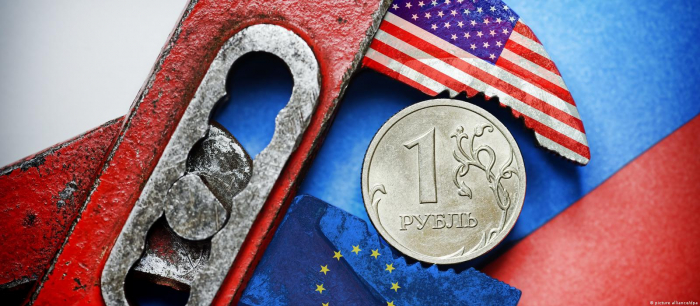While exports from the European Union and the United Kingdom to Russia have plummeted since the Ukraine war began, exports from the EU and the UK to Armenia, Kazakhstan, and Kyrgyzstan have increased sharply. This suggests that sanctions are working, but far from perfectly.
Changes to the global trade system, not least because of the deepening Sino-American rivalry, have been making headlines in recent years. Yet while most of the attention has focused on trends like “friend-shoring,” “near-shoring,” and “reshoring” of supply chains, recent changes in the patterns of cross-border Eurasian trade have gone largely unnoticed, despite their implications about the effectiveness of Western sanctions on Russia.
Those sanctions cover goods that could “contribute to the enhancement of Russian industrial capacities,” including quantum-computing technologies, advanced semiconductors, sensitive machinery, goods related to transportation, and chemicals. They also cover arms, goods for use in the oil industry and maritime navigation, and luxury products.
Some goods are considered “partly” sanctioned, because the list of sanctioned goods is not perfectly aligned with the product codes – more than 6,000 in total – in the standard trade classification. For example, sanctions may cover only products with a value above a certain threshold – say, a ski suit that costs more than €300 ($330) – or only some products belonging to a particular category, such as sparkling wine. (Champagne is subject to sanctions, but prosecco is not, presumably because Russian oligarchs are expected to be fonder of the former.)
The question is whether Russia is able to circumvent Western restrictions and access sanctioned goods. There is good reason to think it is.
True, exports from the European Union and the United Kingdom to Russia have declined by more than half since the country launched its full-scale invasion of Ukraine last year, and the drop is 80% steeper for sanctioned goods than for non-sanctioned goods. But exports from the EU and the UK to Armenia, Kazakhstan, and Kyrgyzstan have also increased sharply, especially among products affected by EU and UK sanctions on Russia. And these three countries – all members of the Eurasian Customs Union, alongside Belarus and Russia – have increased exports to Russia, particularly exports of – you guessed it – products that are subject to sanctions.
Although these shifts do not prove foul play, they do suggest that some sanctioned goods are making their way to the Russian market through a kind of Eurasian trade merry-go-round. Although the new Eurasian flows currently amount to only 5 to 10% of the drop in direct exports from the EU and the UK to Russia, this share has been rising – and is already very high for dozens of specific product lines.
For example, in the early months of sanctions (May-August 2022), indirect trade through Eurasia already was offsetting 58% of the drop in direct exports of internal-combustion vehicles (those with a value exceeding €50,000 are sanctioned). It more than compensates for the drop in exports of computers.
There has also been a noticeable increase in Eurasian trade in goods that are similar to sanctioned goods. This may mean that some trade shipments are being deliberately misclassified to avoid sanctions – a practice often used to evade border taxes. For example, one might label an x-ray machine for industrial use, which is subject to sanctions, as an x-ray machine for dentistry, which can be exported freely. European exports of pumps and compressors – only some of which are sanctioned – to Central Asia have increased substantially.
Trade between Europe and Russia has likely also been diverted through other countries. Exports from China and Turkey to Russia have increased since the middle of last summer, with those from China, in particular, including a number of Western-sanctioned goods. As European exports of diesel trucks to Russia dropped by $102 million, Chinese exports of such trucks to Russia were $362 million higher in May-August 2022 relative to the 2017-21 average for the same period. Similar trends can be seen in other types of heavy machinery.
The sharp drop in direct exports from the EU and the UK to Russia suggests that sanctions are working to some extent. But export sanctions will always be difficult to implement perfectly, owing to incentives mismatches. Participating governments want everyone else to enforce the rules strictly, but may be willing to take a somewhat more lenient approach to their own firms – a phenomenon reminiscent of the Cold War. At the same time, non-participating governments seize any opportunity to boost their own exporters.
If sanctioning countries try to ramp up pressure on one transit country, another route for evading restrictions will inevitably be found. The implication is clear: No sanctions regime is airtight. To increase the effectiveness of its measures, the West will need to devise mechanisms for ensuring coordinated action.
Beata Javorcik, Chief Economist of the European Bank for Reconstruction and Development, is Professor of Economics at Oxford University and a fellow of All Souls College.
More about:
















































